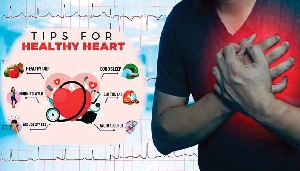
Choosing a heart-healthy diet will help you maintain low cholesterol levels. A healthful lifestyle with an abundance of seasonal fruits, salads, vegetables, nuts (almonds, walnuts, peanuts), and vegetables. Reducing consumption of foods high in cholesterol, such as red meat, pure milk, and its derivatives such as butter and ghee. The atherogenic portion of total cholesterol is the LDL cholesterol fraction. It should be maintained below 100 mg/dL, and in high-risk patients, below 70 mg/dL. Patients with a history of heart attack, stroke, or limb artery disease should maintain a blood glucose level below 50 mg/dL. Regular exercise is a great complement to a healthy diet.
There are several types of patients who require long-term medication. The most commonly prescribed medications are statins (atorvastatin and rosuvastatin). These are always administered under medical supervision.
No Smoking: Each cigarette inhaled brings the risk of a heart attack closer. More than 20 per day multiplies the probability by five, 10 to 19 per day by three, and less than 10 per day by two. It is estimated that each cigarette smoked shortens a person's life by four minutes. Its nicotine content causes multiple disturbances, including an increase in heart rate, blood pressure, and constriction of the arteries. In addition, the carbon makes the blood more coagulable and increases the likelihood of thrombus formation within the diseased coronary artery.
High blood pressure is a prevalent concern in both urban and rural areas, with a prevalence of 30 to 40 percent in adults over 30 years of age. It requires increased awareness because it is rarely accompanied by symptoms. Important preventive measures include ingesting less salt and an abundance of fruits and vegetables. Despite this, a large population requires pharmacological treatment, frequently in combination. In a study reported by our group, 54% of patients prescribed medications by government health centers had uncontrolled blood pressure. This requires a collaborative effort between health authorities and non-profit organizations. Ideal blood pressure is 130/80 mm Hg or less.
Approximately 15% of our adult population suffers from diabetes, making its identification and management a significant concern. Self-testing glucose levels using point-of-care devices is a crucial instrument. Oral medications that are inexpensive and simple to ingest are available, but they are underutilized. Rarely are newer agents that enhance heart-related outcomes employed. If we are to make a dent in the ever-increasing heart disease population, particularly heart attacks and heart failure, this challenge must be approached with a military mentality. As with elevated blood pressure, a combined approach is required. Non-diabetic individuals should have a fasting blood sugar of less than 100 mg/dl and an HBA1C of less than 6. Anyone with a Fasting blood sugar greater than 100 and an HBA1C greater than 6 should seek medical care.
Obesity, particularly truncal obesity: It is a significant issue, particularly among the urban populace and the prosperous rural milieu. Due to a lack of physical activity, an abundant non-vegetarian diet, and the abundance of fruits and green vegetables, the consumption of these foods is low. The population must be made aware of this fact, and it is crucial to promote exercise and sports at a young age. Ideal waist-to-hip ratios for women and men are less than 0.70 and 0.85, respectively. The BMI determined using weight and height in a straightforward formula should be less than 25 Kg/M2 and between 25 and 29.9 kg/m2 is considered overweight, while 30 kg/m2 is considered obese.
The importance of this point has already been emphasized. It causes obesity, a rise in diabetes, and elevated blood pressure. Recommending at least 30 minutes of exercise at least five times per week is an effective method for preventing a heart attack.
7. Low consumption of fruits and vegetables: This is a common occurrence in the valley, and most of the food consumed is deep-fried and prepared with extremely fatty culinary media. This eliminates its nutritional and protective qualities. Rice and traditional breakfast bread must be substituted for their high carbohydrate content. Homemade roti along with sprouts and melons is the optimal diet. Everyone should consume four to five servings of fruits, seasonal fruits, and vegetables with seeds such as almonds and walnuts every day. These items are cardioprotective.
Workplace or domestic stress is a significant risk factor. It's crucial to reduce it. Again, simpler said than done in contemporary culture. However, daily investment of one hour can be exceedingly beneficial. It can be accomplished through Yoga, Meditation, Namaz, and Zikr. Other equally effective methods include listening to soothing music for an hour, viewing a calming or entertaining film, swimming or jogging.
What about red wine consumption?Recent data, including a WHO statement, have disproved the "French Paradox" theory. All forms and quantities of alcohol are harmful to health.
Message to Take Home: Smoking cessation, a healthy lifestyle, healthy diet, regular exercise, and periodic health screenings to detect high blood pressure, diabetes, and high lipid levels and manage the abnormalities can prevent 90 percent of heart attacks.
